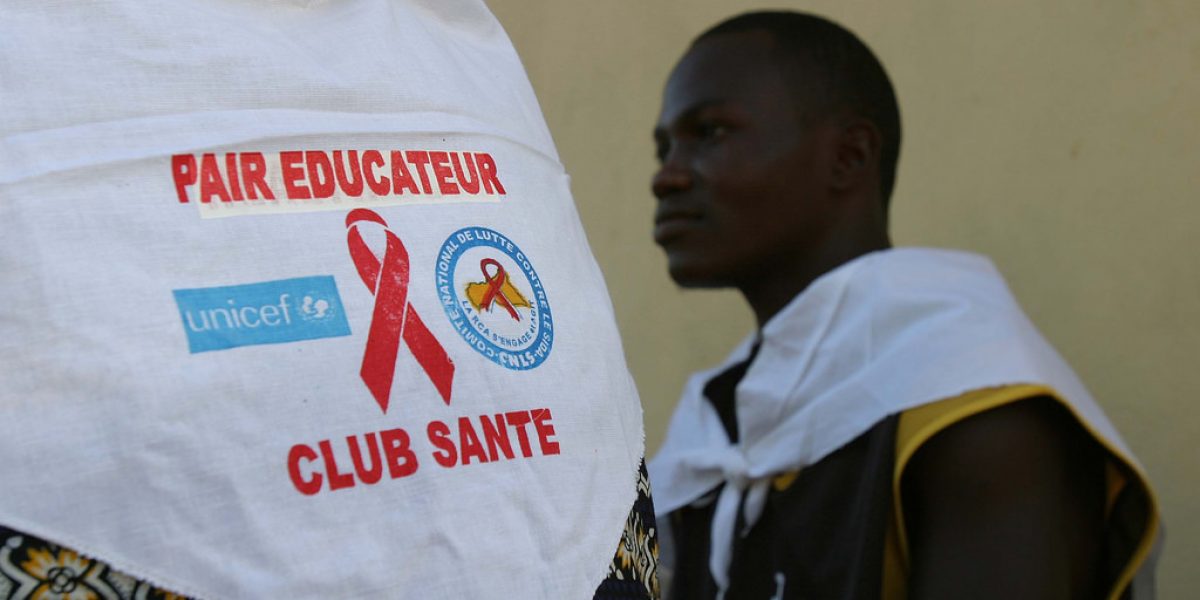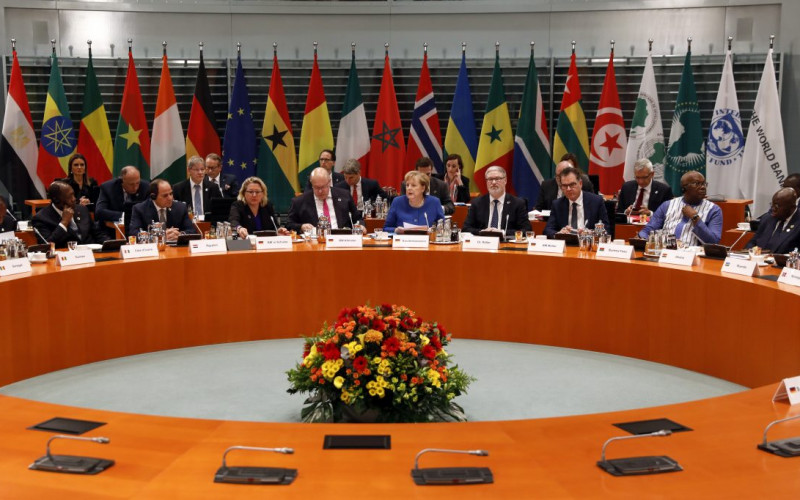Museveni and his forces were constantly on the move, evading heavy fire from government troops in vast papyrus swamps and thick, steamy forests of western Uganda. One day, the BBC filtered through his shortwave with news of a strange new sexually transmitted disease ravaging far off Zambia.
The guerrilla commander needed no other cues. Already AIDS was spreading through Uganda, too, where more than a decade of civil war had created the causes and conditions that enable AIDS to thrive: roaming armies, displaced populations, poverty, malnutrition, economic collapse and a health care system in shambles. As the guerrillas advanced through the country, they heard stories from villagers of a new wasting disease known locally as ‘Slim’. Upon hearing the radio report, Museveni warned his troops against casual sex.
In fact, doctors in Kampala had identified the first cases of AIDS as early as 1983, but Obote, distracted with the war, ignored their findings. The ministry of health blamed AIDS deaths on poor sanitation.
But having been convinced in the bush, Museveni stayed his course after coming to power in January 1986. ‘Slim’ was killing people everywhere. The new president listened to the doctors who had investigated the first AIDS cases. Based on scientific advice, he made HIV/AIDS a priority. Months later, the Ugandan minister of health, Rukahana Ruguinda, caused a stir at the World Health Organisation (WHO) Assembly in Geneva when he said: ‘Fellow delegates, I have to inform you that we have a problem with AIDS in Uganda, and we would like the support of the international community in dealing with it.’
With these simple words, Uganda broke away from the denial prevalent among many African leaders and governments through the 1980s and 1990s and charted a new course on AIDS. The result was scandalous across Africa. As Francis Omaswa, Uganda’s current director of health, recalled, the reaction of other African health ministers in Geneva was venomous: ‘Our African brothers attacked us for bringing bad publicity to Africa.’
One of the earliest and hardest hit countries, Uganda provides lessons in how to turn around a persistent and devastating epidemic. In 1983, the town of Mbarara had a prevalence rate of 30.2%. Nine years later that figure had fallen to 10.6%. Nationally, Uganda has chopped its AIDS rate from 15% in 1991 to 5% in 2001, according to UNAIDS.
James Putzel, an AIDS expert at the London School of Economics, in a 2003 study on AIDS in Uganda and Senegal, cites five critical factors in effective responses to the epidemic: an understanding of the pattern of the epidemic; a multi-dimensional strategy – medical, technical, social, economic and political; behaviour change; surveillance and prevention; and containing vertical transmission of the AIDS virus.
Putzel also cites four key leadership requirements:
- Action at the highest level is dependent on a situation where leaders have everything to gain and nothing to lose by responding openly to AIDS.
- Medical and scientific evidence must inform political decisions.
- All government offices must be held by people committed to fighting AIDS
- Mobilisation of social institutions hinges on central authority.
By October 1986, just 10 months after taking office, Museveni had put the country on full drive against AIDS. The Ministry of Health set up an AIDS Control Programme, one of the first in the world, which focused on blood safety, surveillance, treatment of opportunistic infections, management of other sexually transmitted diseases, education and prevention.
The media literally drummed in the message. Drums sounded a warning every half-hour on national radio: ‘AIDS is invading, AIDS is sexually transmitted, AIDS kills, AIDS can be prevented.’ The existing media – one radio, one TV channel and one newspaper – relayed warnings, but had limited reach, so Museveni went around the country, explaining to the village councils the new government’s 10-point plan and the facts about AIDS: that it is a disease caused by a virus, not by witchcraft or angry ancestors, and that it can be prevented. He did not have to emphasise the gravity – people were dying in every village.
‘If you go into a field and see an ant hill and put your hand in a hole and you are bitten by a snake, whose fault is it?’ he was fond of asking.
Museveni encouraged public debate and defied cultural and religious taboos against discussing sex. ‘Despite considerable criticism, the president and sectors of his government persisted, exhibiting considerable courage,’ a World Bank case study noted in 2003.
Nothing to lose
The effects of a long and destructive civil war ironically made it easier for Museveni to be so open. Unlike neighbouring Kenya, where President Daniel arap Moi feared losing tourists if his government acknowledged having AIDS, Uganda had nothing to lose except its people.
The government’s pro-activity paid dividends. In January 1987, the WHO helped Uganda draft a five-year anti-AIDS plan. Donors pledged $6.9 million for the first year and $14 million for the next four years.
From the beginning, Uganda’s response was community-based. The government marshalled NGOs and the Catholic, Anglican and Muslim faiths. The army was mobilised to distribute condoms and activate communities. The First Lady, Janet Museveni, took up the cause of children orphaned by war and AIDS.
Every group was welcomed and allowed to work within its own beliefs and values. This broad national partnership of many actors fostered a sense of ownership of the response. Shattered by war and poverty, communities placed immense trust and hope on their new president and his advice. Packaged as a ‘patriotic duty’, the fight against AIDS brought the nation together.
For officials, political legitimacy hinged on their commitment to AIDS. Also, every family was in one way or other affected. ‘Museveni wielded a lot of power so senior officers followed,’ said Army Capt. Stephen Talugende, one of the first military officers to disclose publicly that he was HIV-positive. Several studies note that Uganda’s approach to information, education and communication relied less on high-tech media interventions and more on low-tech social and personal communication. ‘Such personal communication networks can be more effective than mass media campaigns in transmitting AIDS knowledge because they personalise risk, convince people and produce real behaviour change,’ said experts Rand Stoneburner and Daniel Low-Beer in a presentation to USAID in 2002.
Interestingly, Uganda did not have a formal national AIDS policy, only guidelines developed in 1993. ‘There were a lot of common sense policies on the ground,’ said Ruben del Prado, UNAIDS country coordinator in Uganda. (A national overarching policy is being developed now.) The important thing was to get ordinary citizens involved in controlling the epidemic themselves. The locus of the anti-AIDS drive was individual responsibility. It hinged on self-control and self-empowerment – people as agents of change.
‘Getting people organised is more important than papers and policies,’ Talugende said. ‘Mobilise communities and the results will be there.’








